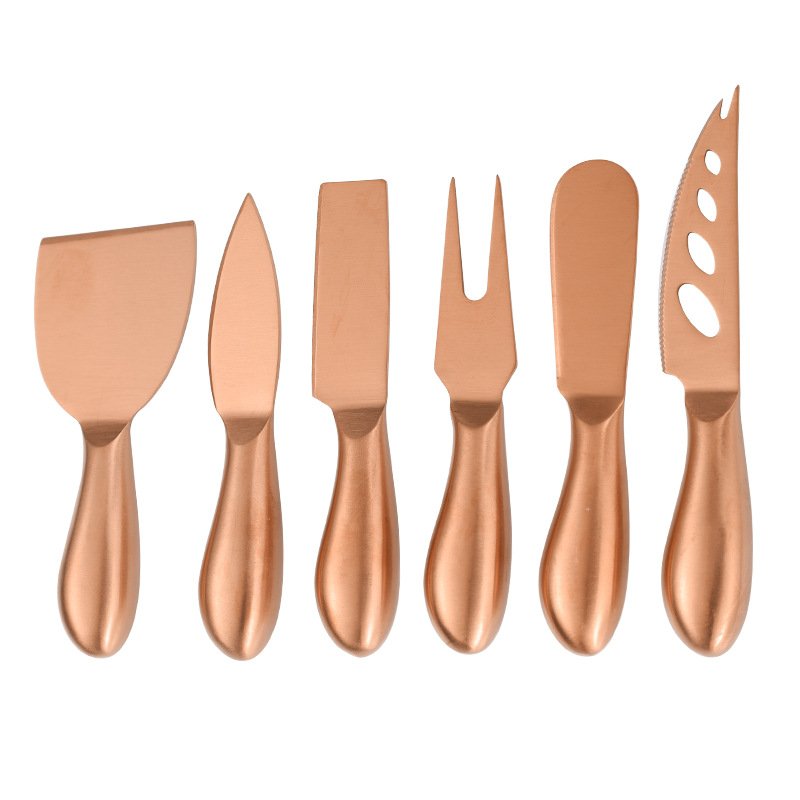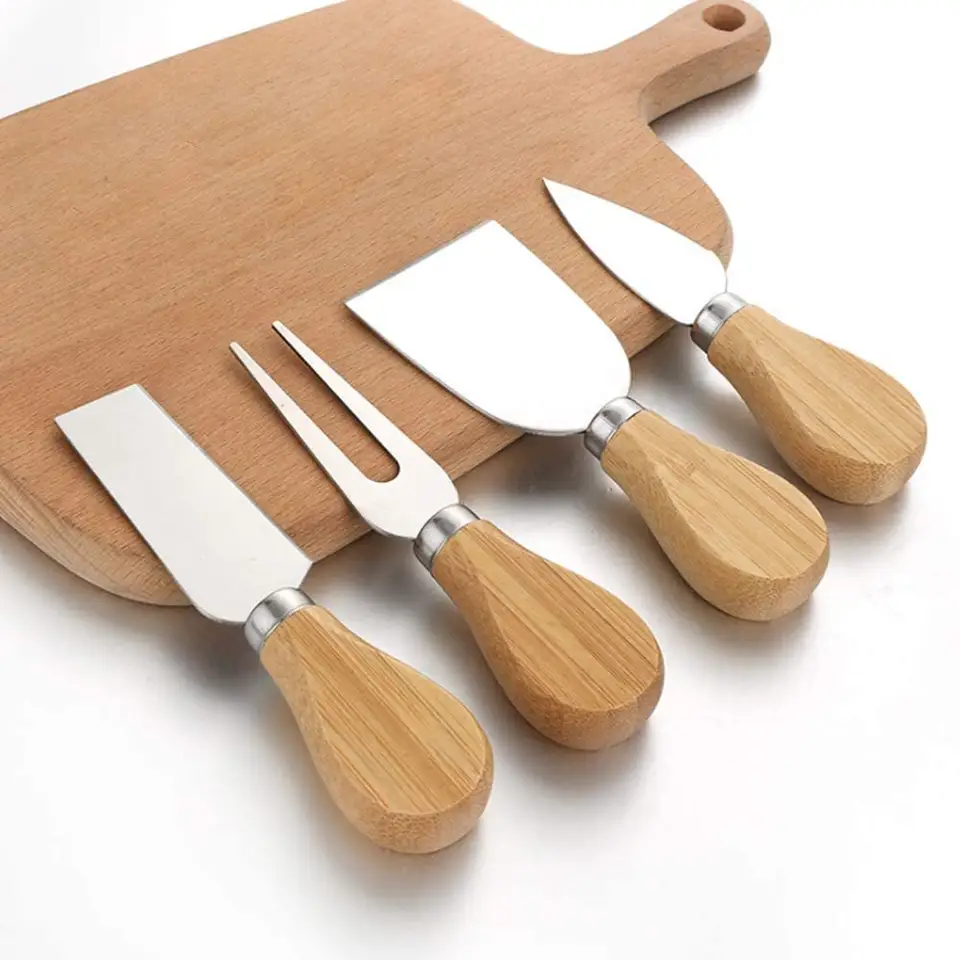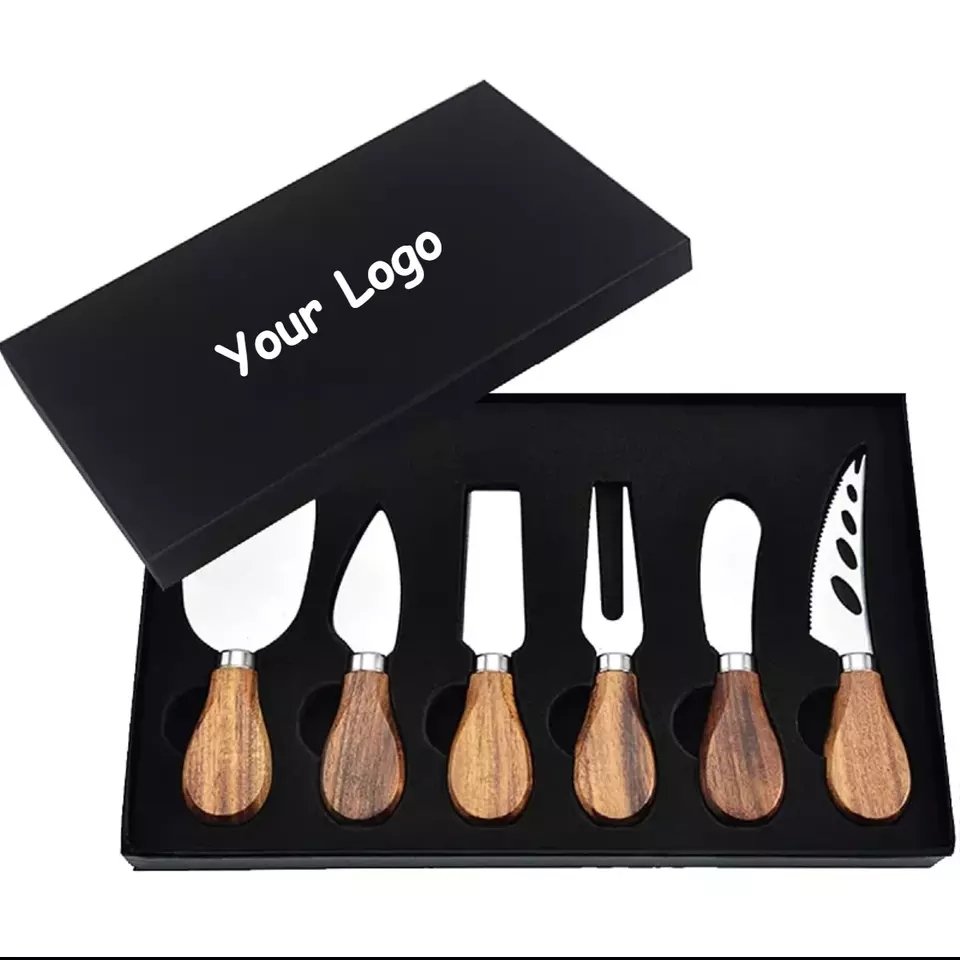Finding quality cutlery can be tricky, especially when confusing grades leave you puzzled. Are you choosing wisely or throwing money away?
18/10 stainless steel is best, offering excellent corrosion resistance and durability due to its higher nickel content. For balance between cost and quality, 18/8 is also good, while 18/0 is budget-friendly but less resistant.
With so many grades available, it’s easy to feel overwhelmed. Let’s break down each type clearly, helping you choose cutlery confidently.
Table of Contents
What grade stainless steel is best for cutlery?
Frustrated by rusty forks and spoons? Unsure why your utensils degrade quickly? It’s time to learn the facts behind stainless steel grades.
The best grade stainless steel for cutlery is 18/10. It contains 18% chromium and 10% nickel, making it highly resistant to corrosion, durable, shiny, and easy to maintain.
Choosing cutlery starts with understanding materials. Each stainless steel grade is unique, impacting how your cutlery looks, feels, and lasts.
Stainless Steel Grade Breakdown:
✨ Stainless Steel Grades: Composition, Performance & Look
| Grade | Chromium % | Nickel % | Corrosion Resistance | Cost | Appearance |
|---|---|---|---|---|---|
| 18/10 | 18% | 10% | ⭐⭐⭐⭐⭐ Excellent | 💲💲💲 High | ✨ Shiny, premium |
| 18/8 | 18% | 8% | ⭐⭐⭐⭐ Very Good | 💲💲 Moderate | ✨ Shiny |
| 18/0 | 18% | 0% | ⭐⭐ Fair | 💲 Low | ⚪ Less shiny |
From experience, I recommend 18/10 stainless steel. Its high nickel content protects it from rust and corrosion. It keeps a nice, glossy shine even after heavy use. Restaurants, hotels, and households looking for quality and lasting appearance favor 18/10.
However, it doesn’t mean other grades have no value. 18/8 is similar but slightly less resistant due to lower nickel content. For cost-conscious buyers, 18/0 might make sense, especially if frequent replacements are acceptable.
Ultimately, the choice depends on what matters most to you. Think about usage intensity, budget, appearance needs, and maintenance willingness.
What grade stainless steel utensils are best?
Do your utensils bend easily or rust quickly? You might have chosen the wrong stainless steel grade unknowingly.
18/10 stainless steel utensils are best. They offer superb resistance to corrosion and bending, maintaining strength and shine after prolonged and heavy use.
Utensils differ slightly from general cutlery because they’re used frequently, requiring more resilience. Here’s how various grades perform:
Utensil Grade Comparison:
🔍 Stainless Steel Grades: Strength, Resistance & Best Uses
| Grade | Strength | Corrosion Resistance | Heat Resistance | Ideal Use |
|---|---|---|---|---|
| 18/10 | 🔧 High | ⭐⭐⭐⭐⭐ Excellent | 🔥 High | ✅ Daily & commercial use |
| 18/8 | 👍 Good | ⭐⭐⭐⭐ Good | 🔥 Good | 🏠 Regular household |
| 18/0 | ⚙️ Moderate | ⭐⭐ Fair | 🔥 Moderate | 🕒 Occasional or budget use |
While 18/10 utensils perform best, this doesn’t mean other grades can’t suffice in certain situations. 18/8 is acceptable for regular household use if properly maintained. If you rarely use utensils or need them temporarily, 18/0 might be reasonable, despite lower durability.
What is the best stainless steel flatware rating?
Feeling lost with flatware choices and not knowing what rating really matters? You’re not alone!
The best stainless steel flatware rating is generally 18/10, noted for durability, excellent corrosion resistance, shine, and easy maintenance, making it ideal for daily and formal use.
Flatware ratings confuse many buyers. Let me clarify this clearly with critical comparisons:
Flatware Ratings Simplified:
🥇 Stainless Steel Ratings: Rust Protection, Cost & Usage Guide
| Rating | Nickel Content | Rust Resistance | Price | Recommended For |
|---|---|---|---|---|
| 18/10 | 🔝 Highest | ⭐⭐⭐⭐⭐ Excellent | 💲💲💲 High | ✅ Daily use, formal dining |
| 18/8 | ⚖️ Medium | ⭐⭐⭐⭐ Very Good | 💲💲 Medium | 🏠 Regular household use |
| 18/0 | 🚫 None | ⭐⭐ Fair | 💲 Low | 💡 Budget-friendly purposes |
If you regularly entertain guests or demand elegance in your daily meals, 18/10 flatware suits best. Its strong resistance to corrosion and its glossy finish make it reliable and visually appealing.
Is 18-10 or 18 8 flatware better?
Confused between the close competition of 18/10 and 18/8 flatware? You’re not alone.
18/10 flatware is better than 18/8. While both are resistant to rust, 18/10 offers slightly better durability and shine, thanks to higher nickel content.
Let’s critically examine these grades:
Critical Differences:
✅ 18/10 vs. 18/8 Stainless Steel: Quick Verdict Table
| Feature | 18/10 | 18/8 | Verdict |
|---|---|---|---|
| Shine | ✨ High | 👍 Good | ✅ 18/10 |
| Durability | 💪 Excellent | 👍 Good | ✅ 18/10 |
| Price | 💲💲💲 Higher | 💲💲 Moderate | ✅ 18/8 |
| Maintenance | 🧽 Easy | 🧽 Easy | 🤝 Equal |
If budget allows, 18/10 wins for its superior durability and shine. For cost-saving without major compromise, 18/8 is practical.
What should I look for when buying stainless steel cutlery?
Tired of poor-quality cutlery purchases and unsure what features really matter?
When buying stainless steel cutlery, look for nickel content, corrosion resistance, sturdy design, weight balance, finish quality, ease of cleaning, and dishwasher safety.
Detailed Checklist:
✅ Key Factors When Choosing High-Quality Stainless Steel Cutlery
| Factor | Description |
|---|---|
| Nickel Content | Choose 18/10 for maximum rust resistance and long-term shine |
| Weight & Balance | Should feel solid, evenly balanced, and comfortable in hand |
| Finish Quality | Look for smooth edges, no burrs, and a uniform polish |
| Ease of Cleaning | Dishwasher-safe, no water stains, easy to maintain finish |
Dishwasher safe, easy maintenance |
| Durability | Resistant to bending, breaking, and rusting |
Considering these factors ensures you’ll buy durable and comfortable cutlery for everyday enjoyment.
Does Cuisinart use 18-10 stainless steel?
Frustrated by unclear product labels that make it tough to confirm stainless steel quality? You’re not alone—I faced similar confusion early in my cutlery career.
Yes, Cuisinart commonly uses 18/10 stainless steel for their premium cookware and cutlery lines, valued for its durability, rust resistance, and lasting shine.
When exploring brands like Cuisinart, knowing the specific stainless steel grade matters. Cuisinart typically highlights 18/10 stainless steel because it offers top-tier corrosion resistance and a beautiful finish. But what does this really mean for everyday use?
Cuisinart's 18/10 Steel vs. Lower Grades
Here’s a comparison to clarify why 18/10 is preferred by Cuisinart:
🥇 Stainless Steel Grades Comparison: 18/10 vs. 18/8 vs. 18/0
| Feature | 18/10 Stainless Steel | 18/8 Stainless Steel | 18/0 Stainless Steel |
|---|---|---|---|
| Rust Resistance | ⭐⭐⭐⭐⭐ Excellent | ⭐⭐⭐⭐ Very Good | ⭐⭐ Moderate |
| Shine | ✨ Long-lasting, mirror-like finish | ✨ Good, slightly duller | ⚪ Dulls quickly |
| Durability | 💪 Very high | 👍 High | ⚙️ Medium |
| Nickel Content | 🔟 High (10%) | 8️⃣ Medium (8%) | 🚫 None (0%) |
| Price | 💲💲💲 Premium | 💲💲 Moderate | 💲 Budget |
While some might argue that Cuisinart’s use of 18/10 steel significantly raises costs, I believe it’s an investment in quality. From my experience working with cutlery brands globally, consumers generally prefer longer-lasting cutlery, making 18/10 worth the additional expense. Lower-grade steel tends to tarnish or corrode more quickly, requiring more frequent replacement.
However, if budget is a priority, Cuisinart’s more affordable lines sometimes feature 18/8 stainless steel, still providing good durability and rust resistance. It’s less shiny but still practical. So, always check product descriptions carefully to confirm the exact grade.
From a product designer’s perspective, especially someone like Jacky, understanding these details helps significantly during material selection. Designing premium kitchenware involves considering both aesthetics and practical performance, exactly why brands like Cuisinart often stick to 18/10 stainless steel.
What are the 3 grades of stainless steel?
Overwhelmed by complicated stainless steel labels? It can be tough figuring out which type suits your cutlery needs without clear guidance.
The three main stainless steel grades used for cutlery are 18/10, 18/8, and 18/0, named according to their chromium and nickel percentages, affecting their resistance to rust and appearance.
Stainless steel cutlery typically uses three main grades. Each offers distinct advantages and disadvantages.
Breaking down the grades clearly:
| Grade | Chromium % | Nickel % | Rust Resistance | Shine Quality | Best Use |
|---|---|---|---|---|---|
| 18/10 | 18% | 10% | ⭐⭐⭐⭐⭐ Excellent | ✨ Highest | 👑 Premium homes, luxury restaurants |
| 18/8 | 18% | 8% | ⭐⭐⭐⭐ Very Good | ✨ Good | 🏠 Regular households, mid-range restaurants |
| 18/0 | 18% | 0% | ⭐⭐ Moderate | ⚪ Fair | 💲 Budget homes, casual eateries |
Why Grade Matters
From my decade-long experience in cutlery manufacturing, I’ve seen many buyers misunderstand these steel grades. The main confusion usually lies in nickel content, which directly impacts corrosion resistance. Higher nickel content (18/10) ensures more durability and shine, ideal for frequent use and dishwasher cleaning.
Yet, designers and consumers must balance quality against cost. For designers like Jacky, understanding these grades means optimizing designs that match user expectations. For instance, an everyday set might lean towards 18/8, balancing cost and quality. High-end products almost always opt for 18/10 to ensure brand reputation stays strong.
However, I have observed that for markets with sensitive budgets, 18/0 steel remains popular. Despite its lower resistance to corrosion, its lower cost attracts many budget-conscious consumers. Still, as a professional in the industry, my recommendation always leans toward at least 18/8 to ensure consumer satisfaction over time.
Does 18/8 stainless steel leach nickel?
Concerned about nickel exposure from your cutlery? It’s a common worry, especially if you’re sensitive or allergic.
Yes, 18/8 stainless steel can potentially leach minimal nickel, especially when exposed to acidic foods or prolonged contact. However, amounts are typically very small and generally safe.
Nickel leaching from stainless steel can happen, but how serious is this issue?
Risks and Facts:
| Condition | Leaching Risk | Severity | Recommendation |
|---|---|---|---|
| Short-term usage | 🟢 Minimal | 🔽 Low | ✅ Safe for general population |
| Prolonged acidic exposure (e.g., vinegar) | 🟡 Slightly increased | 🔼 Medium | 💡 Rinse promptly after acidic use |
| Dishwasher cleaning | 🟢 Low | 🔽 Low | ✅ Generally safe |
| Nickel allergies | 🔴 Potential concern | 🔺 High | 🚫 Choose nickel-free stainless (18/0) |
During my years in the cutlery industry, I’ve often had customers ask about nickel safety. From studies and industry data I’ve reviewed, typical nickel exposure from 18/8 stainless steel is well within safe limits set by global health authorities, like FDA and European standards.
Still, for people sensitive or allergic to nickel, even minor exposure might trigger reactions. In these cases, switching to 18/0 stainless steel, with no nickel content, provides peace of mind. But remember, this choice comes with the downside of lower corrosion resistance and shorter product lifespan.
Balancing the small health risk against material quality can be challenging. Yet, as I often advise clients, simple measures—such as quickly washing utensils after exposure to acidic foods—effectively minimize nickel release risks.
For designers like Jacky, this information shapes material recommendations for products targeting sensitive demographics or specialty markets like healthcare and children’s products.
Does 18/8 stainless steel leach nickel?
Have you ever wondered if the nickel in your cutlery might affect your health? Knowing the facts could save you unnecessary worry.
18/8 stainless steel can leach nickel in very small amounts, but it’s generally considered safe for most people. Those with severe nickel allergies should use alternatives.
How Much Nickel Does 18/8 Stainless Steel Actually Release?
Many consumers worry about nickel leaching from stainless steel. In reality, the level of nickel released from 18/8 stainless steel under typical use is extremely low. Most studies show that only minimal amounts of nickel leach into food, even after years of regular use.
But the issue becomes critical when dealing with acidic or salty foods. Acidic conditions, like tomato sauce or vinegar, can slightly increase nickel release. Yet, even then, the amounts remain below levels considered dangerous for healthy individuals.
Here’s a clearer picture:
| Condition | Nickel Leaching Risk | Recommendation |
|---|---|---|
| Normal Conditions | 🟢 Very Low | ✅ Safe for general use |
| Acidic Foods | 🟡 Low to Moderate | 💡 Avoid prolonged contact or storage |
| Damaged or Scratched | 🔴 Moderate to High |
However, we must also think critically. While standard stainless steel is safe for general populations, sensitivity varies. People with strong nickel allergies can experience reactions even from trace amounts. So, manufacturers have started providing nickel-free alternatives, like 18/0 stainless steel, which contains no nickel.
To understand more clearly, here’s a real-life scenario from my personal experience. A customer of mine, Lisa, once ordered 18/8 stainless steel sets. Later, she found out some users had slight skin irritations. Although these cases were rare, we provided an 18/0 replacement option, and the problem was resolved immediately. This taught me the importance of transparency and understanding customer needs deeply.
Is Nickel-Free Always Better?
Nickel-free options like 18/0 are great for sensitive groups, but there’s a trade-off: nickel increases corrosion resistance. Without nickel, stainless steel is more susceptible to rust and stains over time. So, it’s important to balance health concerns and product durability when choosing cutlery grades.
What is 18/8 stainless steel used for?
Confused about when and where to choose 18/8 stainless steel? Picking the wrong material might mean sacrificing quality or increasing costs unnecessarily.
18/8 stainless steel is widely used for kitchen utensils, cutlery, cookware, and restaurant equipment due to its good balance of corrosion resistance, durability, and affordability.
Why 18/8 Stainless Steel is Popular in the Kitchen Industry?
18/8 stainless steel is popular because it combines good durability, moderate cost, and resistance to staining and corrosion. In cutlery production, this grade offers manufacturers the best balance. It has enough nickel (8%) to significantly enhance its corrosion resistance compared to nickel-free options, but it remains cheaper than the higher nickel content of 18/10 stainless steel.
Let’s break down the reasons for choosing 18/8 stainless steel clearly:
| Features | Advantages | Disadvantages |
|---|---|---|
| Corrosion Resistance | ✅ Good for everyday kitchen use | ⚠️ Less resistant than 18/10 |
| Durability | ✅ Strong and long-lasting | ⚠️ May show scratches over time |
| Cost-effectiveness | ✅ More affordable than 18/10 | ⚠️ Still more expensive than 18/0 |
| Appearance | ✅ Bright and polished look | ⚠️ Slightly duller than 18/10 |
Jamin, a product designer I frequently collaborate with, once explained the rationale behind selecting 18/8 for certain designs. He mentioned that for mid-level consumer products, 18/8 strikes the perfect balance between visual appeal, functionality, and production costs. High-end restaurants often prefer 18/10 for its superior shine, while budget-conscious establishments opt for 18/0. Thus, the popularity of 18/8 stainless steel in household kitchens and mid-tier dining venues remains stable.
Are There Situations to Avoid Using 18/8?
Despite its many benefits, there are scenarios where 18/8 is not ideal. For high-end cutlery demanding a flawless appearance and maximum corrosion resistance, 18/10 is preferable. On the other hand, for customers highly sensitive to nickel, 18/0 stainless steel is a better alternative. Recognizing your precise needs helps avoid unnecessary costs or potential customer dissatisfaction.
Is 18 10 stainless steel silverware safe?
Are safety worries about using 18/10 stainless steel holding you back from purchasing premium cutlery? Misunderstanding its safety profile could limit your options unnecessarily.
18/10 stainless steel silverware is safe, durable, and highly corrosion-resistant, making it ideal for food preparation and dining, though those with nickel allergies should choose nickel-free alternatives.
Debunking Safety Myths About 18/10 Stainless Steel
Many people ask about the safety of 18/10 stainless steel due to its nickel content. However, this grade is not only safe but is often the most recommended choice for premium cutlery and flatware. The high nickel content (10%) significantly improves corrosion resistance, making 18/10 stainless steel exceptionally durable and ideal for frequent use.
Let’s clarify safety points step by step:
| Safety Aspect | ✅ Fact | ❌ Misconception |
|---|---|---|
| Nickel Content | Safe for most people – minimal leaching in 18/10 | Unsafe due to presence of nickel |
| Corrosion Resistance | Excellent – ideal for acidic foods and dishwasher use | Susceptible to rust or acid damage |
| Durability | Very durable – resistant to bending and wear | Fragile or easily scratched/dented |
The only true safety concern arises for individuals with severe nickel allergies, who may experience skin reactions or sensitivities. For everyone else, including typical home users and professional dining establishments, 18/10 stainless steel is one of the safest, most reliable options available.
To provide a practical example, my brand, Brilliant, regularly advises clients about choosing appropriate stainless steel types. A premium restaurant customer previously worried about the nickel content in 18/10 products. After extensive explanation backed by safety data, they confidently chose 18/10 stainless steel and have since reported only positive experiences—proof of the safety and durability of this material.
Is There a Perfect Grade of Stainless Steel for Everyone?
Truthfully, no single stainless steel grade perfectly suits everyone. While 18/10 is superior in many ways, personal health concerns, budget, and intended use all affect your choice. Being aware of these details ensures you find the ideal match for your needs.
Understanding stainless steel cutlery grades like 18/10, 18/8, and 18/0 helps you choose safer, durable, and cost-effective products tailored specifically to your personal needs or business.





